Thermal solution options can affect the life of the PV inverter 2-3 times
Abstract: Different heat dissipation methods will affect the working environment temperature of each component in the inverter, and then directly relate the lifespan and failure rate of each component and the whole machine. How much influence does temperature have on major components and product life? For the air-cooled self-cooling scheme discussed more string string inverters, through the actual comparison of products, the advantages and disadvantages are more obvious.
For the string-type photovoltaic inverter, the industry has its own opinions on the advantages and disadvantages of air-cooled and self-cooling cooling solutions. This article takes the domestic representative brand 30KW air-cooled string photovoltaic inverters sold in the market, and the 20KW self-cooling string photovoltaic inverters (including internal disturbance fans, used to uniform the internal temperature of the chassis) as samples, analyzing the air-cooled The impact of the cold solution on the life of the inverter.
1. Operating temperature of internal devices under air-cooled/self-cooled cooling mode
Select two product samples to operate stably under the same normal working environment. The temperature values ​​of the key components inside the test collection equipment are shown in Table 1.
Table 1: Internal device ambient temperature at full load operation

(Stable operation at 480V DC, 400V AC, 50°C ambient temperature)
Judging from the comparison of measured data, the operating environment of the same working environment is stable at full load. The operation temperature of the 20KW self-cooled inverter is higher by about 10°C than that of the 30kW air-cooled inverter.
2. Comparison and Analysis of Operating Temperature and Lifetime of Key Components
2.1, comparison of membrane capacitor life
According to the actual measurement data of the internal temperature of the sample product, it is assumed that the ripple current is the same and operates at 1.1 times the rated voltage (the curves have the same inclination, which makes it easy to read the value 1.1 times without affecting the comparison result). According to the curve in Figure 1, the two films can be obtained. For example, Table 2 shows the capacitor life.
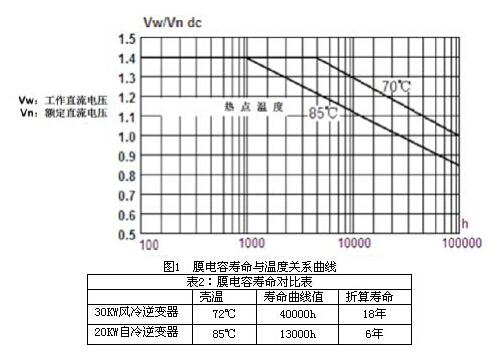
In the critical device membrane capacitance, the device life under the air-cooled heat-dissipating working environment is three times that of the device under the self-cooling and heat-dissipating working environment.
2.2. Comparison of internal fan life
Take Sanyo fans as an example, the relationship between fan life and temperature is shown in Figure 2. According to the measured data of the internal temperature of the sample product, according to the curve of Figure 2, the fan life can be obtained as shown in Table 3:
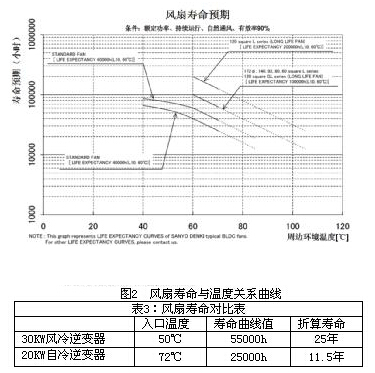
On the critical device fan, the device life in the air-cooled heat-dissipation work environment is more than double the device life under the self-cooling heat-dissipation work environment.
2.3, module life comparison analysis
The module is the core device of the inverter. The internal junction temperature during operation directly affects the service life. Figure 3 shows the relationship between junction temperature and lifetime of the die provided by Infineon. According to the measured data of the internal temperature of the sample product, the module junction temperature and the module life span of the two modules are calculated. For example, Table 4 (professional computing process is strong and is not described here).
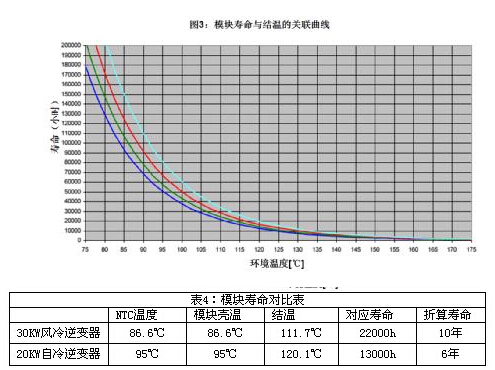
On the critical device module, the device life under the air-cooled heat dissipation working environment is 1.7 times the device life under the self-cooling heat dissipation working environment.
3, fan device life and maintainability
The life of the device directly determines the life of the whole machine, and the maintainability of the failed device directly affects the maintenance cost of the entire machine. In the comparison and design of 30KW air-cooled inverters and 20KW self-cooled inverters, 30KW air-cooled inverters have significant advantages in fan design and selection.
3.1, fan life is higher than the power station life
The fan is a mature industrial device. It is NMB fan applied to the sample 30KW air-cooled inverter. The protection class is IP65. It can work in any dust environment and even completely immersed in water. Figure 4 shows the NMB fan life curve.
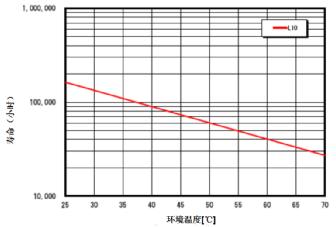
Figure 4 NMB fan life curve
According to Fig. 4, the maximum operating temperature of the inverter is 50 degrees and the normal operation time is 60,319 hours. Through intelligent forced air-cooling control, only the module temperature of the inverter reaches more than 70 degrees, the fan will fully turn. In the normal day, the time to meet the full-rotation condition is about 6 hours, and the year is 365 days. The fan life is shown in Table 5.

In the worst case, the 30KW air-cooled inverter fan can run for 27.5 years. In addition, considering the rain and the ambient temperature below 50°C, the operating life of the fan will be longer.
3.2, fan maintainability
The working life of the fan of the 30KW air-cooled inverter is much longer than that of the inverter. Under normal circumstances, there is no need to maintain the fan. Even if there is a situation that needs to be replaced, the fan has good and fast detachability, as shown in Figure 5.
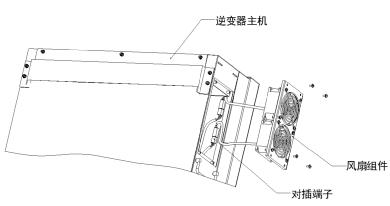
Figure 5 The detachable structure of the 30KW air-cooled inverter fan
Different maintenance personnel performed fan replacement on the inverter three times. The time used is shown in Table 6 below.

Summary: By collecting and comparing the operating data of the 30KW air-cooled inverter and the 20KW self-cooled inverter under the same working environment, the air-cooled cooling mode can improve the life of each key component by 2-3 times compared with the self-cooling cooling mode. In particular, fans of air-cooled inverters have a lifetime that exceeds the life of the inverter itself.
Reducer is one of the chemical industrial Pipe Fittings. It is used in connecting two pipes with different diameters via welding. It usually adopts diameter reduction pressing, diameter expansion pressing or diameter reduction and expansion pressing. Stamping is treated in some reducers. The reducers were divided into Concentric Reducer and Eccentric Reducer.
Standard:ASME B16.9-2007,ASME B16.25-2007,ASME B16.5-2007,EN10253-1-1999 EN10253-2-2007 EN10253-3-2008 EN10253-4-2008
DIN2605-1-1992 DIN2605-2-1995,JIS B2311-2009 JIS B2312-2009 JIS B2313-2009,GB/T12459-2005 GB/T13401-2005 GB/T10752-2005SH/T3408-1996 SH/T3409-1996,SY/T0609-2006 SY/T0518-2002 SY/T0510-1998,DL/T695-1999 GD2000 GD87-1101,HG/T21635-1987 HG/T21631-1990
Size:Seamless Pipe Reducer : 1/2"~24"DN15~DN600
Welding pipe reducers: 4"~78" DN150~DN1900
Wall Thickness:sch10, sch20, sch30, std, sch40, sch60, xs, sch80, sch100, sch120, sch140, sch160, xxs, sch5s, sch20s, sch40s, sch80s
Material: carbon steel: ASTM/ASME A234 WPB-WPC
alloy steel: ASTM/ASME A234 WP 1-WP 12-WP 11-WP 22-WP 5-WP 91-WP 911stainless steel: ASTM/ASME A403 WP 304-304L-304H-304LN-304N ASTM/ASME A403 WP 316-316L-316H-316LN-316N-316Ti ASTM/ASME A403 WP 321-321H ASTM/ASME A403 WP 347-347H
Low-temperature steel: ASTM/ASME A402 WPL 3-WPL 6
High performance steel: ASTM/ASME A860 WPHY 42-46-52-60-65-70Industrial processes:bending,squeezing,pressing,forging,machining and more.
Applications:Our pipe reducers are widely used in many industries,such as petroleum,power generation,natural gas, chemicals, shipbuilding, papermaking and metallurgy,and so on.
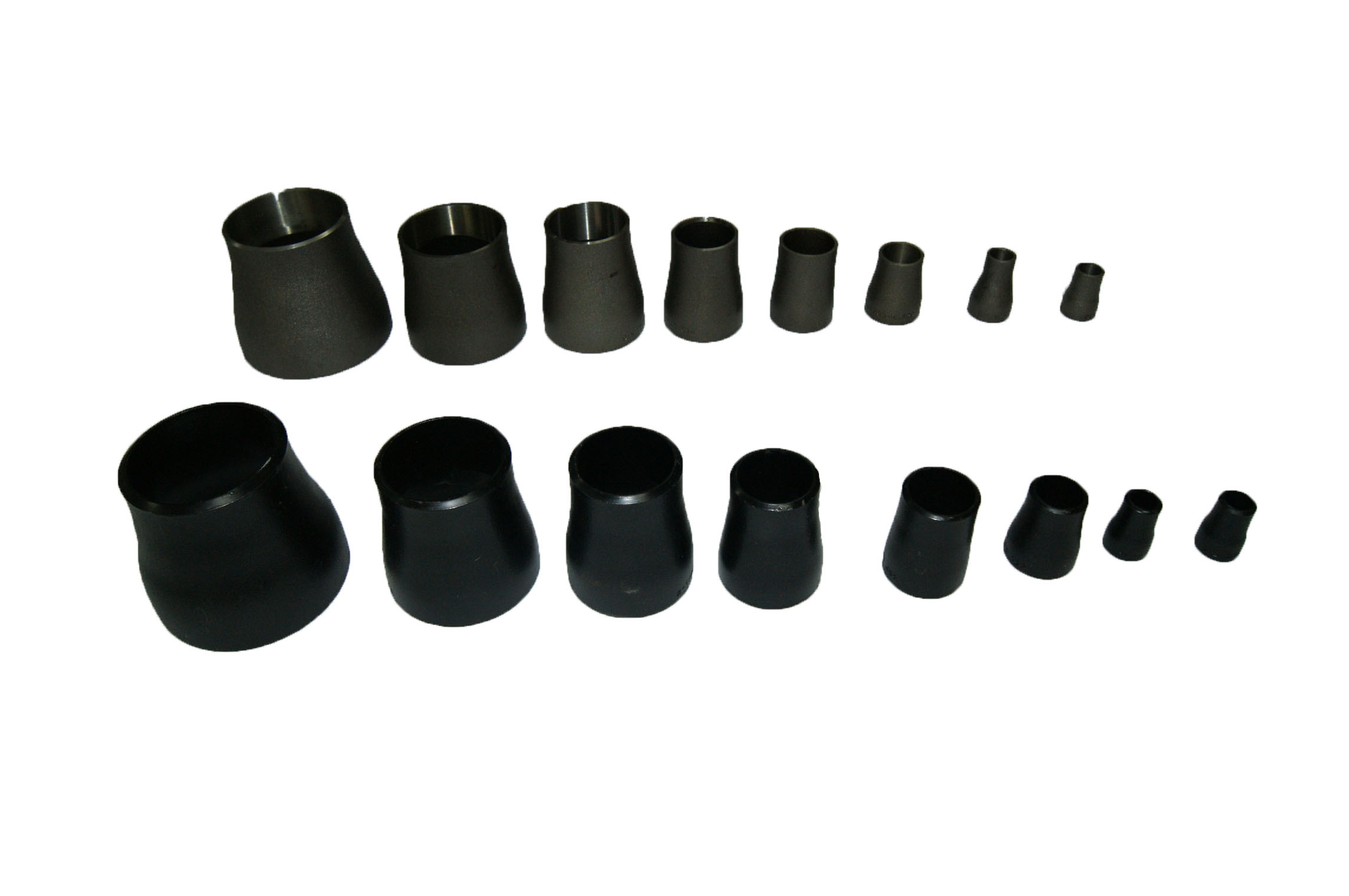
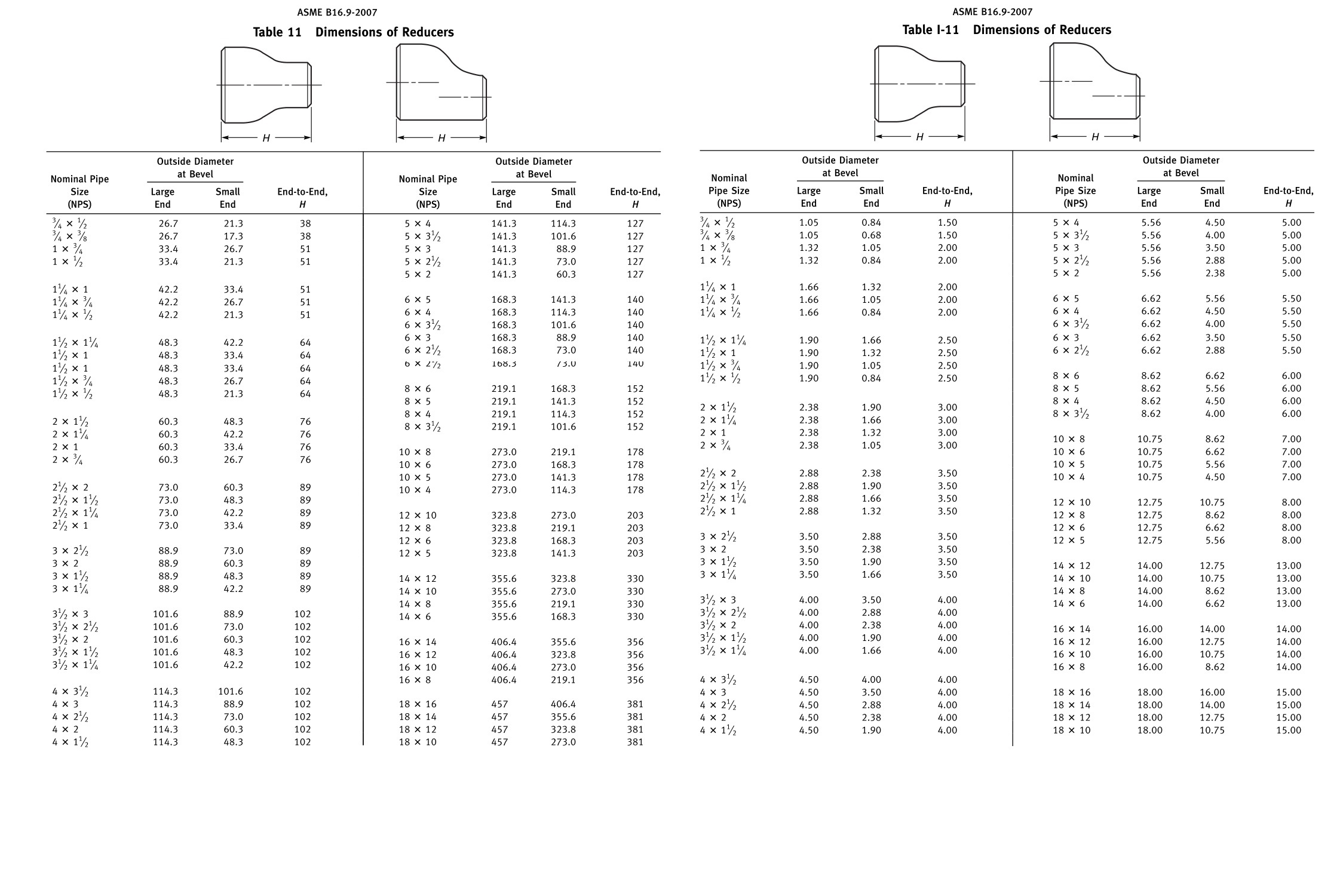

Steel Reducers,Pipe Reducer,Concentric Reducer,Eccentric Reducer
HEBEI ZIFENG NEW ENERGY TECHNOLOGY CO.,LTD. , https://www.zifengpipeline.com